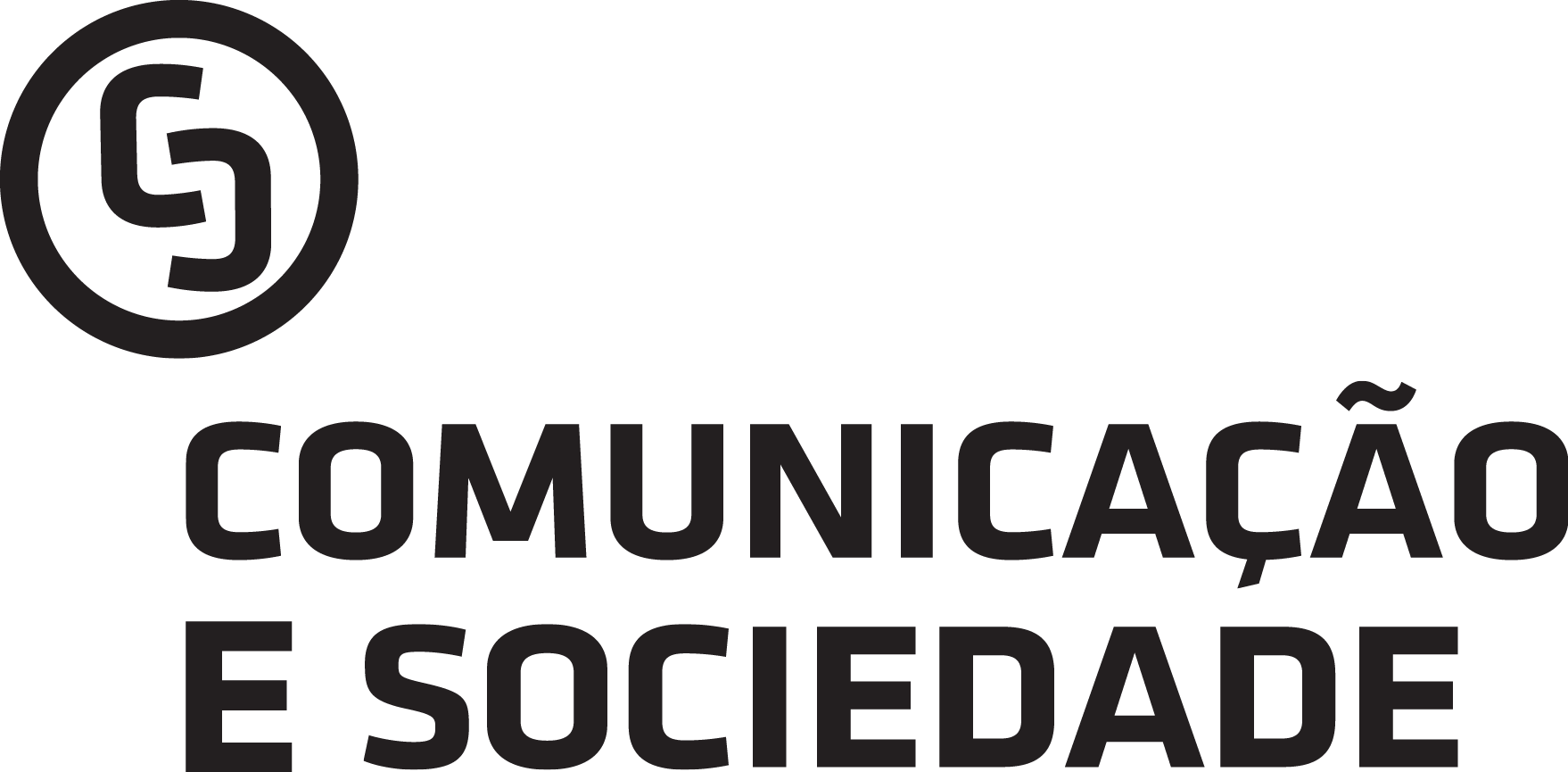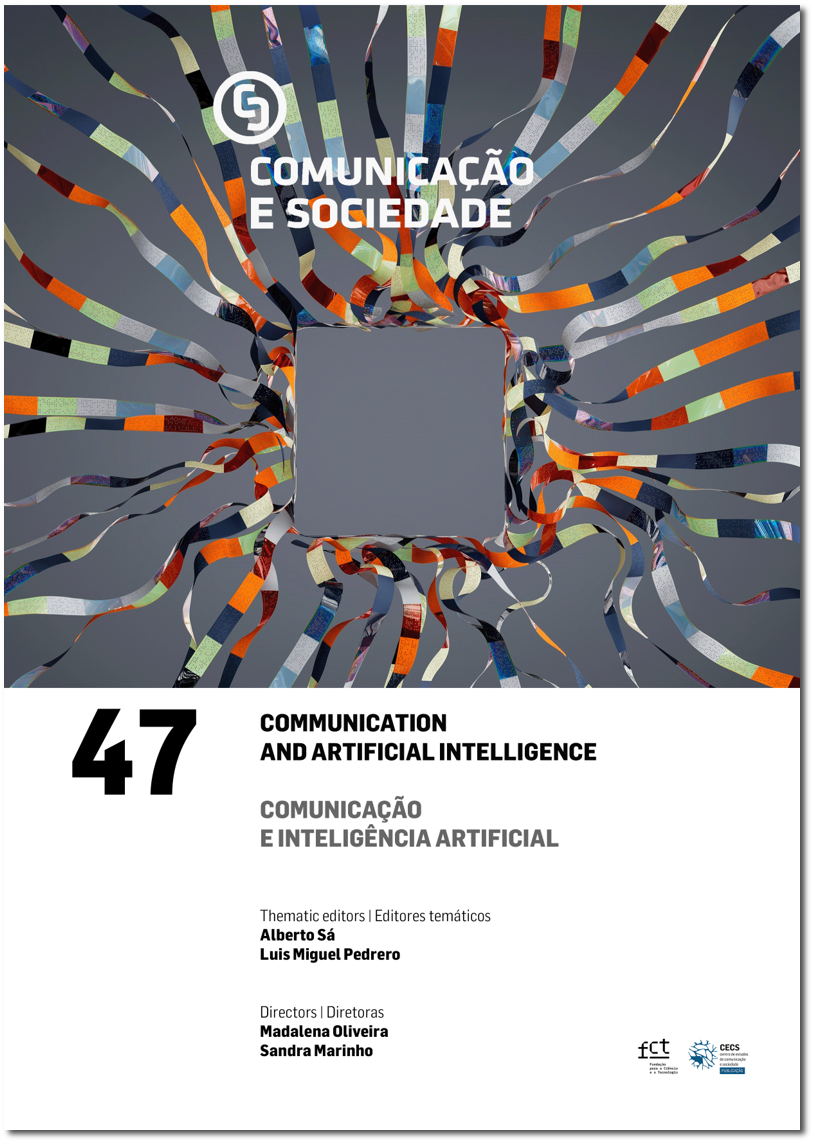Artificial Intelligence and News: Opportunities, Trends and Challenges — A Systematic Literature Review
DOI:
https://doi.org/10.17231/comsoc.47(2025).6187Keywords:
artificial intelligence, news, journalism, systematic literature reviewAbstract
Artificial intelligence (AI) has become a central topic across numerous fields and is increasingly embedded in both the personal and professional dimensions of contemporary life. In the realm of journalism and news production, AI is gaining prominence, presenting not only innovative opportunities but also significant challenges and ethical concerns. Its integration into journalistic workflows and news consumption processes raises complex questions related to automation, bias, transparency, accountability, and the future of creative labor in the media industry.
This study conducts a systematic review of the academic literature on the intersection of AI and news, focusing on publications from January 2020 to September 2024. The research was guided by the PRISMA methodology and involved a rigorous selection process of academic sources indexed in the Scopus and Web of Science databases, resulting in a final corpus of 43 relevant articles and book chapters. The review maps the main sub-themes under investigation — such as the use of AI in content creation, algorithmic gatekeeping, audience engagement, and regulatory implications.
Through a narrative analysis, this article synthesizes the key findings of existing studies and highlights emerging trends and research gaps. It offers critical reflections on the implications of AI for journalistic practice and democratic communication and suggests directions for future scholarly inquiry and regulatory development.
Downloads
References
Ahmad, N., Haque, S., & Ibahrine, M. (2023). The news ecosystem in the age of AI: Evidence from the UAE. Journal of Broadcasting & Electronic Media, 67(3), 323–352. https://doi.org/10.1080/08838151.2023.2173197 DOI: https://doi.org/10.1080/08838151.2023.2173197
Avin, S. (2024). Exploring artificial intelligence futures. In S. Bears & T. Hobson (Eds.), An anthology of global risk (pp. 285–305). Open Book Publishers. DOI: https://doi.org/10.11647/obp.0360.08
Biju, P. R., & Gayathri, O. (2023). Stop fake news: AI, algorithms and mitigation actions in India. The Law, State and Telecommunications Review, 15(1), 207–224. https://doi.org/10.26512/lstr.v15i1.41873 DOI: https://doi.org/10.26512/lstr.v15i1.41873
Chen, Y., Zhai, Y., & Sun, S. (2024). The gendered lens of AI: Examining news imagery across digital spaces. Journal of Computer-Mediated Communication, 29(1), 1–11. https://doi.org/10.1093/jcmc/zmad047 DOI: https://doi.org/10.1093/jcmc/zmad047
Chiang, T. H. C., Liao, C., & Wang, W. (2022). Impact of artificial intelligence news source credibility identification system on effectiveness of media literacy education. Sustainability, 14(8), 1–16. https://doi.org/10.3390/su14084830 DOI: https://doi.org/10.3390/su14084830
Chin, C. (2024, August 31). Navigating the risks of artificial intelligence on the digital news landscape. Center for Strategic & International Studies.
Cloudy, J., Banks, J., & Bowman, N. D. (2022). AI journalists and reduction of perceived hostile media bias: Replication and extension considering news organization cues. Technology, Mind, and Behavior, 3(3), 1–15. https://doi.org/10.1037/tmb0000083 DOI: https://doi.org/10.1037/tmb0000083
Datta, P., Whitmore, M., & Nwankpa, J. K. (2021). A perfect storm: Social media news, psychological biases, and AI. Digital Threats: Research and Practice, 2(2), 1–21. https://doi.org/10.1145/3428157 DOI: https://doi.org/10.1145/3428157
de Lima Santos, M. F., & Ceron, W. (2022). Artificial intelligence in news media: Current perceptions and future outlook. Journalism and Media, 3, 13–26. https://doi.org/10.3390/journalmedia3010002 DOI: https://doi.org/10.3390/journalmedia3010002
de Lima Santos, M. F., & Salaverría, R. (2021). From data journalism to artificial intelligence: Challenges faced by La Nación in implementing computer vision in news reporting*. Palabra Clave, 24(3). https://doi.org/10.5294/pacla.2021.24.3.7 DOI: https://doi.org/10.5294/pacla.2021.24.3.7
Deuze, M., & Beckett, C. (2022). Imagination, algorithms and news: Developing AI literacy for journalism. Digital Journalism, 10(10), 1913–1918. https://doi.org/10.1080/21670811.2022.2119152 DOI: https://doi.org/10.1080/21670811.2022.2119152
Diez-Gracia, A., Sánchez-García, P., & Martín-Román, J. (2023). Disintermediation and disinformation as a political strategy: Use of AI to analyse fake news as Trump’s rhetorical resource on Twitter. Profesional de la Información, 32(5), e320523. https://doi.org/10.3145/epi.2023.sep.23 DOI: https://doi.org/10.3145/epi.2023.sep.23
Du, Y. R. (2023). Personalization, echo chambers, news literacy, and algorithmic literacy: A qualitative study of AI-powered news app users. Journal of Broadcasting & Electronic Media, 67(3), 246–273. https://doi.org/10.1080/08838151.2023.2182787 DOI: https://doi.org/10.1080/08838151.2023.2182787
Eldridge, S. A., II, Cheruiyot, D., Banjac, S., & Swart, J. (2024). The Routledge companion to digital journalism studies. Routledge. DOI: https://doi.org/10.4324/9781003334774
Habes, M., Mansoori, A., & Tahat, D. (2023). The theory of planned behavior regarding artificial intelligence in recommendations and selection of YouTube news content. In 2023 International Conference on Multimedia Computing, Networking and Applications (MCNA) (pp. 42–47). IEEE. https://doi.org/10.1109/MCNA59361.2023.10185878 DOI: https://doi.org/10.1109/MCNA59361.2023.10185878
Heim, S., & Chan-olmsted, S. (2023). Consumer trust in AI – Human news collaborative continuum: Preferences and influencing factors by news production phases. Journalism and Media, 4, 946–965. https://doi.org/10.3390/journalmedia4030061 DOI: https://doi.org/10.3390/journalmedia4030061
Hong, J., Chang, H. H., & Tewksbury, D. (2024). Can AI become Walter Cronkite? Testing the machine heuristic, the hostile media effect, and political news written by artificial intelligence. Digital Journalism, 13(4), 845–868. https://doi.org/10.1080/21670811.2024.2323000 DOI: https://doi.org/10.1080/21670811.2024.2323000
Huang, Y., & Yu, Z. (2023). Understanding the continuance intention for artificial intelligence news anchor: Based on the expectation confirmation theory. Systems, 11(9), 1–26. https://doi.org/10.3390/systems11090438 DOI: https://doi.org/10.3390/systems11090438
Jaakkola, M. (2024). Reporting on artificial intelligence: A handbook for journalism educators. Unesco. https://doi.org/10.58338/HSMK8605 DOI: https://doi.org/10.58338/HSMK8605
Jeon, Y., Kim, J., Park, S., Ryu, S., Kim, S.-W., & Han, K. (2024). HearHere: Mitigating echo chambers in news consumption through an AI-based web system. Proceedings of the ACM on Human-Computer Interaction, 8, 1–34. https://doi.org/10.1145/3637340 DOI: https://doi.org/10.1145/3637340
Ji, X., Kuai, J., & Zamith, R. (2024). Scrutinizing algorithms: Assessing journalistic role performance in Chinese news media’s coverage of artificial intelligence. Journalism Practice, 18(9), 2396–2413. https://doi.org/10.1080/17512786.2024.2336136 DOI: https://doi.org/10.1080/17512786.2024.2336136
Lacity, M. C. (2022). Fake news, technology and ethics: Can AI and blockchains restore integrity? Journal of Information Technology Teaching Cases, 12(2), 121–134. https://doi.org/10.1177/2043886921999065 DOI: https://doi.org/10.1177/2043886921999065
Lao, Y., & You, Y. (2024). Unraveling generative AI in BBC News: Application, impact, literacy and governance. Transforming Government: People, Process and Policy. Advance online publication. https://doi.org/10.1108/TG-01-2024-0022 DOI: https://doi.org/10.1108/TG-01-2024-0022
Lee, J., & Shin, S. Y. (2021). Something that they never said: Multimodal disinformation and source vividness in understanding the power of AI-enabled deepfake news. Media Psychology, 25(4), 531–546. https://doi.org/10.1080/15213269.2021.2007489 DOI: https://doi.org/10.1080/15213269.2021.2007489
Lee, S., Nah, S., Chung, D. S., & Kim, J. (2020). Predicting AI news credibility: Communicative or social capital or both? Communication Studies, 71(3), 428–447. https://doi.org/10.1080/10510974.2020.1779769 DOI: https://doi.org/10.1080/10510974.2020.1779769
Levy-Landesberg, H., Cao, X. (2024). Anchoring voices: The news anchor’s voice in China from television to AI. Media, Culture & Society, 47(2), 229–251. https://doi.org/10.1177/01634437241270937 DOI: https://doi.org/10.1177/01634437241270937
Lim, J. S., Shin, D., Zhang, J., Masiclat, S., Luttrell, R., & Kinsey, D. (2023). News audiences in the age of artificial intelligence: Perceptions and behaviors of optimizers, mainstreamers, and skeptics. Journal of Broadcasting & Electronic Media, 67(3), 353–375. https://doi.org/10.1080/08838151.2022.2162901 DOI: https://doi.org/10.1080/08838151.2022.2162901
Lindgren, S. (2023). Introducing critical studies of artificial intelligence. In S. Lindgren (Ed.), Handbook of critical studies of artificial intelligence (pp. 1–19). Edward Elgar Publishing. DOI: https://doi.org/10.4337/9781803928562.00005
Liu, F., Makady, H., Nah, S., & McNealy, J. (2024). When citizens support AI policies: The moderating roles of AI efficacy on AI news, discussion, and literacy. Journal of Information Technology & Politics, 21(4), 493–509. https://doi.org/10.1080/19331681.2023.2294363 DOI: https://doi.org/10.1080/19331681.2023.2294363
Mahajan, R., Piplani, S. D., Sharma, U., Chatterjee, R., Bale, A. S., & Savadatti, M. B. (2024). Breaking news at machine speed: The rise of AI in real-time journalism. Library Progress International, 44(3), 1060–1069.
Moher, D., Liberati, A., Tetzlaff, J., Altman, D. G., Altman, D., Antes, G., Atkins, D., Barbour, V., Barrowman, N., Berlin, J. A., Clark, J., Clarke, M., Cook, D., D’Amico, R., Deeks, J. J., Devereaux, P. J., Dickersin, K., Egger, M., Ernst, E., … Tugwell, P. (2009). Preferred reporting items for systematic reviews and meta-analyses: The PRISMA statement. PLoS Medicine, 6(7), e1000097. https://doi.org/10.1371/journal.pmed.1000097 DOI: https://doi.org/10.1371/journal.pmed.1000097
Molitorisz, S. (2024). A legal cure for news choice overload: Regulating algorithms and AI with ‘light patterns’ to foster autonomy and democracy. Policy & Internet, 16(3), 1–18. https://doi.org/10.1002/poi3.412 DOI: https://doi.org/10.1002/poi3.412
Moran, R. E., & Shaikh, S. J. (2022). Robots in the news and newsrooms: Unpacking meta-journalistic discourse on the use of artificial intelligence in journalism. Digital Journalism, 10(10), 1756–1774. https://doi.org/10.1080/21670811.2022.2085129 DOI: https://doi.org/10.1080/21670811.2022.2085129
Nah, S., Luo, J., Kim, S., Chen, M., Mitson, R., & Joo, J. (2024). Algorithmic bias or algorithmic reconstruction? A comparative analysis between AI news and human news. International Journal of Communication, 18, 700–729.
Ndlovu, M. (2024). Audience perceptions of AI-driven news presenters: A case of ‘Alice’ in Zimbabwe. Media, Culture & Society, 46(8), 1692–1706. https://doi.org/10.1177/01634437241270982 DOI: https://doi.org/10.1177/01634437241270982
Nguyen, D. (2023). How news media frame data risks in their coverage of big data and AI. Internet Policy Review, 12(2), 1–30. https://doi.org/10.14763/2023.2.1708 DOI: https://doi.org/10.14763/2023.2.1708
Roe, J., & Perkins, M. (2023). ‘What they’re not telling you about ChatGPT’: Exploring the discourse of AI in UK news media headlines. Humanities and Social Sciences Communications, 10, Article 753. https://doi.org/10.1057/s41599-023-02282-w DOI: https://doi.org/10.1057/s41599-023-02282-w
Russell, S., & Norving, P. (2010). Artificial intelligence: A modern approach (3rd. ed.). Pearson Education. (Original work published 1962)
Saad, E., & Carneiro dos Santos, M. (2023). Jornalismo, inteligência artificial e desinformação: Avaliação preliminar do potencial de utilização de ferramentas de geração de linguagem natural, a partir do modelo GPT, para difusão de notícias falsas. Estudios Sobre el Mensaje Periodístico, 29(4), 783–794. DOI: https://doi.org/10.5209/esmp.87965
Sarisakaloğlu, A. (2021). Framing discourses in Turkish news coverage regarding artificial intelligence technologies’ prospects and challenges. Türkiye İletişim Araştırmaları Dergisi, 37, 20–38. https://doi.org/10.17829/turcom.803338 DOI: https://doi.org/10.17829/turcom.803338
Scheffauer, R., Zúñiga, H. G. de, & Correa, T. (2024). Algorithmic news versus non-algorithmic news: Towards a principle-based artificial intelligence (AI) theoretical framework of news media. Profesional de La Información, 33(1), 1–13.
Shin, D., Zaid, B., Biocca, F., & Rasul, A. (2022). In platforms we trust? Unlocking the black-box of news algorithms through interpretable AI. Journal of Broadcasting & Electronic Media, 66(2), 235–256. https://doi.org/10.1080/08838151.2022.2057984 DOI: https://doi.org/10.1080/08838151.2022.2057984
Simon, F. M. (2022). Uneasy bedfellows: AI in the news, platform companies and the issue of journalistic autonomy. Digital Journalism, 10(10), 1832–1854. https://doi.org/10.1080/21670811.2022.2063150 DOI: https://doi.org/10.1080/21670811.2022.2063150
Simon, F. M. (2023). Escape me if you can: How AI reshapes news organisations’ dependency on platform companies. Digital Journalism, 12(2), 149–170. https://doi.org/10.1080/21670811.2023.2287464 DOI: https://doi.org/10.1080/21670811.2023.2287464
Soo, J., & Zhang, J. (2022). Technology in society adoption of AI-driven personalization in digital news platforms: An integrative model of technology acceptance and perceived contingency. Technology in Society, 69, Article 101965. https://doi.org/10.1016/j.techsoc.2022.101965 DOI: https://doi.org/10.1016/j.techsoc.2022.101965
Stahl, B. C., & Eke, D. (2024). The ethics of ChatGPT – Exploring the ethical issues of an emerging technology. International Journal of Information Management, 74, 1–14. https://doi.org/10.1016/j.ijinfomgt.2023.102700 DOI: https://doi.org/10.1016/j.ijinfomgt.2023.102700
Thomson, T. J., Thomas, R. J., & Matich, P. (2024). Generative visual AI in news organizations: Challenges, opportunities, perceptions, and policies. Digital Journalism. Advance online publication. https://doi.org/10.1080/21670811.2024.2331769 DOI: https://doi.org/10.1080/21670811.2024.2331769
Wellner, G., & Mykhailov, D. (2023). Caring in an algorithmic world: Ethical perspectives for designers and developers in building AI algorithms to fight fake news. Science and Engineering Ethics, 29(4), 1–16. https://doi.org/10.1007/s11948-023-00450-4 DOI: https://doi.org/10.1007/s11948-023-00450-4
Wischnewski, M., & Krämer, N. (2024). Does polarizing news become less polarizing when written by an AI? Journal of Media Psychology. Advance online publication. https://doi.org/10.1027/1864-1105/a000441 DOI: https://doi.org/10.1027/1864-1105/a000441
Wu, C., Wu, F., Qi, T., Zhang, W., Xie, X., & Huang, Y. (2022). Removing AI’s sentiment manipulation of personalized news delivery. Humanities and Social Sciences Communications, 9, 1–9. https://doi.org/10.1057/s41599-022-01473-1 DOI: https://doi.org/10.1057/s41599-022-01473-1
Xue, K., Li, Y., & Jin, H. (2022). What do you think of AI? Research on the influence of AI news anchor image on watching intention. Behavioral Sciences, 12(11), 1–14, https://doi.org/10.3390/bs12110465 DOI: https://doi.org/10.3390/bs12110465
Downloads
Published
How to Cite
Issue
Section
License
Copyright (c) 2025 Catarina Feio, Lídia Oliveira

This work is licensed under a Creative Commons Attribution 4.0 International License.
Authors own the copyright, providing the journal with the right of first publication. The work is licensed under a Creative Commons Attribution 4.0 International License.












